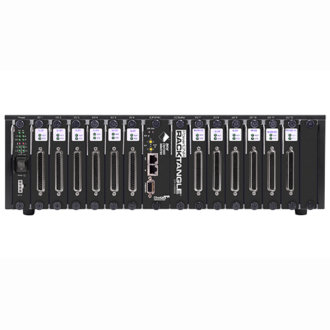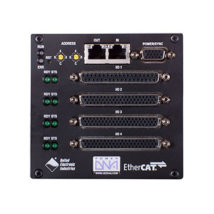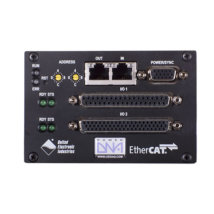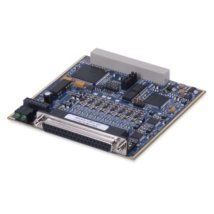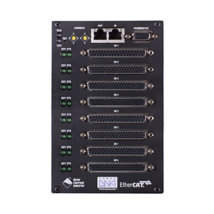DNR-ECAT-1200: 12-Slot EtherCAT I/O Chassis (Rack Format)
The DNx-ECAT series of I/O chassis is built on the well-known DNA series Cubes and UEI’s DNR RACKtangles. This series includes a specially designed CPU module to function as an EtherCAT slave. It provides all the I/O flexibility of the DNA Cubes and RACKs, compatible with over 60 different I/O boards, while ensuring full EtherCAT compliance. Developers can now take advantage of the power, flexibility, and robustness offered by the UEI DNx family. These EtherCAT chassis are perfect for a wide range of industrial, aerospace, and laboratory data acquisition and control applications.
EtherCAT and Real-Time Applications
Ethernet is generally not ideal for real-time monitoring and control due to inherent delays. However, EtherCAT is a specialized implementation of Ethernet designed specifically to support real-time applications. UEI’s DNx series, including standard cubes and racks, also supports real-time I/O systems using the powerful DMAP/VMAP control protocols.
Configuration Options for EtherCAT Chassis
EtherCAT chassis are typically configured in two ways: with MDP (Master Data Protocol) or fixed configuration ESI files. MDP allows the EtherCAT master to query the UEI-ECAT chassis, automatically identifying installed cards and their functionality. Alternatively, some EtherCAT masters require only one ESI file for each device. UEI supports both methods for seamless integration.
CPU Module and Slot Configuration
The CPU module is located in the top slot of the Cube or central RACKtangle. It provides the processor, Ethernet controller (NIC), LEDs, configuration ports, and internal power. This module acts as the “brain” of the unit, controlling its operations, interfacing with the host controller and other cubes, and supervising I/O card activity. The CPU module also features rotary switches to define the EtherCAT device’s ID. When set to ECAT ID 0, the unit address is assigned by the EtherCAT master. In addition to connecting with other UEI chassis, the DNx-ECAT series can be used in any chain with ETG-compliant devices.
I/O Slots and Modules
The rest of the chassis is dedicated to I/O slots, where you can install I/O modules tailored to your process or test application. With over 60 I/O boards available, we offer a wide range of options. These include:
- A/D boards for measuring voltage, current, strain gauges, thermocouples, and more.
- D/A boards with ±40V or ±50mA outputs.
- Digital I/O interfaces for logic and “real” signal levels, counters, timers, and quadrature encoder inputs.
- RVDT/LVDT and communication interfaces for RS-232, RS-422/485.
We are confident we have the right I/O solution for your needs.
EtherCAT Communication and Networking
The EtherCAT master or host communicates with the cube via standard CAT5e/6/7 serial cables. A key advantage of EtherCAT is that it does not require Ethernet switches or routers for multi-chassis connectivity. The EtherCAT network operates in a daisy chain, where an input cable comes from the master, and an output cable connects to the next device in the chain. This setup allows EtherCAT to achieve sub-microsecond propagation, essential for maintaining system throughput and synchronization.
Key EtherCAT Features
Other important EtherCAT specifications include:
- Built-in watchdog timers for reliability.
- Safe state default conditions for system protection.
- Cable redundancy to ensure uninterrupted operation.
These features ensure that EtherCAT systems remain robust and reliable for real-time control and data acquisition applications.

